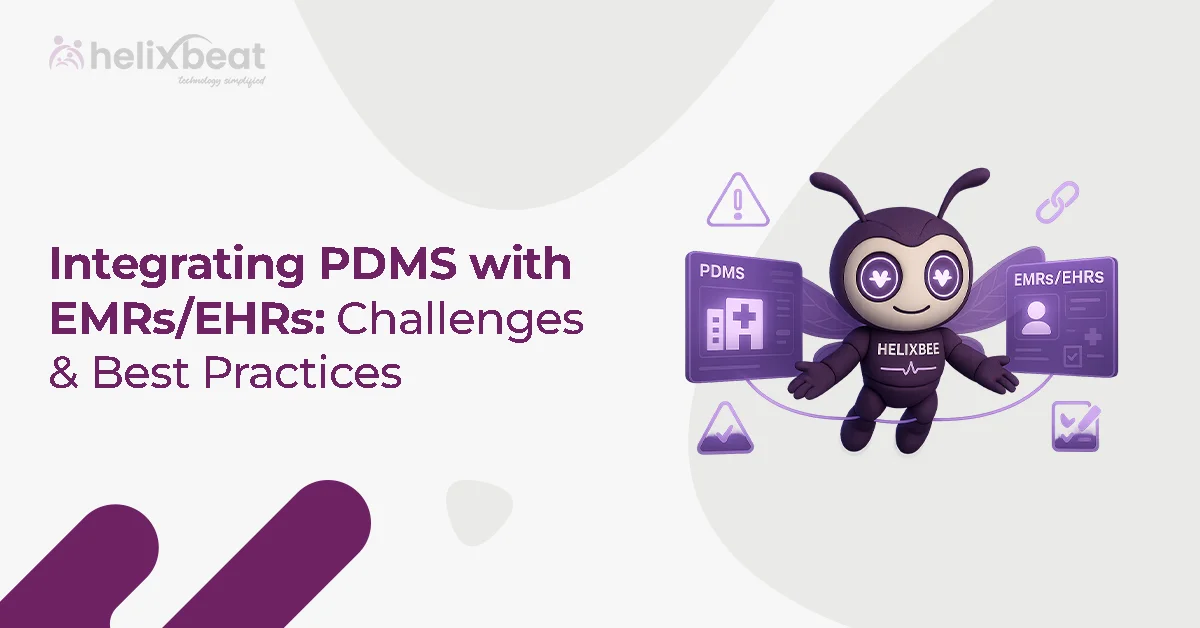Most apps receive low ratings due to slow performance, crashes, bugs, and security issues. Fixing these problems requires more than quick fixes; it necessitates thorough testing, performance checks, automated bug detection, and robust security testing.
When everything goes well, these steps can turn a frustrating app experience into a great one. That’s what happened when Helixbeat’s testing team helped an app go from 2 stars to 4.8 stars.
In this blog, we’ll talk about why app reviews matter and how smart testing can increase your app’s rating.

Table of Contents
Overview on App Ratings and Reviews
App ratings and reviews are vital for building user trust and driving downloads. Studies show that over 90% of users read reviews before downloading an app, making ratings a key factor in their decision. High ratings boost your app’s visibility in app stores, while reviews offer insights into what users like or dislike.
Positive feedback strengthens your app’s reputation, and negative comments highlight areas for improvement. Effective testing like performance, automation, and security testing helps prevent issues that can affect ratings, ensuring a smoother user experience and higher satisfaction.
Why App Review Is Important?
App reviews provide direct feedback from users, helping developers understand what’s working well and what needs improvement. They influence potential users’ decisions and affect the app’s reputation and ranking in app stores. By combining insights from reviews with expert mobile app testing services, developers can continuously improve their apps, building user trust and loyalty over time.
Importance of App Reviews:
- Builds credibility and trust with potential users
- Highlights real user experiences and pain points
- Influences app store rankings and visibility
- Guides developers on necessary updates and fixes
- Encourages user engagement and community building
- Helps identify bugs and security issues early
Difference between Google Play Store vs Apple App Stope
When comparing the Apple App Store and Google Play Store, it’s essential to understand their distinct submission processes, user bases, and app approval guidelines to determine the best platform for your app’s success.
| Feature | Google Play Store | Apple App Store |
| Platform | Android devices | iOS devices (iPhone, iPad) |
| App Submission Process | More lenient, faster approval times | Stricter guidelines, longer review process |
| App Review Time | Usually a few hours to a day | Typically 1-3 days or longer |
| Developer Fees | $25 one-time registration fee | $99/year subscription fee |
| App Revenue Share | 70% to developer, 30% to Google | 70% to developer, 30% to Apple |
| User Base Size | Larger global user base, especially in emerging markets | Smaller but higher spending user base |
| App Testing Requirements | Flexible, but encourages thorough testing | Strict policies on security and performance testing |
| App Updates | Faster rollout, immediate availability | Updates undergo review before release |
| Payment Methods | Supports multiple payment options worldwide | Limited to Apple Pay and select methods |
| App Categories | Broad variety, including apps not allowed on Apple Store | More curated, with stricter content rules |
How Helixbeat Improved App Rating with Smart Testing
Helixbeat used smart testing and mobile app optimization to find and fix key issues. This increases the app’s stability, user experience, and ratings significantly.
1. Complete App Audit
Our journey began with a thorough audit of the struggling app to understand the root causes behind its low rating. For example, we discovered from crash reports that the app would freeze when users tried to upload photos. User feedback also highlighted slow page loading times and concerns about data privacy. This audit gave us a clear roadmap of what needed fixing as part of a broader mobile app optimization strategy.
2. Mobile App Performance Testing
We ran performance tests simulating real users accessing the app on different devices and networks. For instance, on older smartphones with slower connections, the app took over 10 seconds to load the main dashboard, causing frustration. By identifying such bottlenecks, we optimized the loading process, reducing wait times to under 3 seconds.
3. Mobile App Automation Testing Implementation
Instead of manually testing every new feature on dozens of device models, we set up automated test scripts. For example, every time a new update was made, automated tests checked core functions like login, payments, and notifications on both Android and iOS devices. This saved time and caught bugs that manual tests sometimes missed.
4. Security Testing of Mobile Apps
We uncovered vulnerabilities such as unencrypted user passwords stored locally and weak session management. We simulated potential data theft scenarios to see how easily hackers could access personal data. Fixing these issues reassured users their data was safe, which reflected positively in later reviews and was a critical step in our mobile app optimization efforts.
5. User Experience (UX) Testing
Our usability tests revealed confusing navigation. For example, many users struggled to find the settings menu or complete a purchase because buttons were small or hidden in unexpected places. By redesigning these elements for clarity and ease of use, the app became more user-friendly, leading to happier users.
6. Collaborative Bug Fixing
We maintained close communication with developers, prioritizing critical bugs like crashes during photo uploads. Fixing these issues first meant that within weeks, users saw immediate improvements. Developers also benefited from detailed bug reports that made fixes faster and more accurate.
7. Continuous Monitoring and Feedback
After launching updates, we continuously tracked app analytics and user reviews. For example, when a new update accidentally caused a delay in push notifications, we detected it quickly and rolled out a patch within 24 hours. This rapid response helped maintain user trust and kept ratings climbing, demonstrating the importance of ongoing mobile app optimization.
Why Users Give Low Ratings to Apps
Low app ratings often stem from common issues that frustrate users and disrupt their experience, which can be effectively solved through experienced mobile app testing services. Understanding these reasons helps developers focus their testing and improvements effectively.
1. Poor Performance and Frequent Crashes
Users expect apps to work smoothly and reliably. When an app crashes repeatedly or takes too long to load, frustration quickly builds. For example, when Instagram experienced crashes after a major update in 2020, many users flooded app stores with one-star reviews complaining about the instability. Slow performance or freezing during critical moments, like checkout in a shopping app, can cause users to abandon the app and leave negative feedback.
2. Complicated or Confusing User Interface
If an app’s navigation isn’t intuitive or key features are hard to find, users often get annoyed. Take Snapchat, for example; some users have expressed frustration over frequent interface changes, leaving them confused and rating the app poorly. When users can’t easily complete tasks like signing up or making a purchase, they tend to give low ratings, reflecting their poor experience.
3. Security and Privacy Concerns
Users are increasingly aware of data security and privacy. Apps that request excessive permissions or fail to protect personal information often get low ratings. For instance, Facebook has faced criticism and low ratings after multiple data privacy scandals, as users worry about how their data is handled. If users feel their information isn’t safe, they won’t hesitate to downgrade their rating.
How App Ratings and Reviews Impact Your ASO Strategy
1. Improve App Store Ranking
High ratings and positive reviews signal to app stores that your app delivers value, boosting your ranking in search results and category listings. This increased visibility helps attract more organic downloads.
2. Influence User Download Decisions
Most users check ratings and reviews before downloading. Positive feedback builds trust and encourages users to download your app, while low ratings can deter potential users from trying it.
3. Provide Valuable Keywords for ASO
User reviews often contain keywords and phrases that reflect the actual language used by real users. Analysing these helps optimise your app’s metadata, making it easier to appear in relevant searches.
4. Guide Continuous Optimization
Reviews highlight what users love and what frustrates them. This insight informs updates and improvements, helping you fine-tune your app to meet user expectations and maintain strong App Store Optimisation (ASO) performance.
Final Words
Low app ratings and negative reviews often occur due to issues such as slow performance, bugs, security concerns, or a confusing user interface. These issues can make users unhappy and stop them from using your app.
The best way to address this issue is through effective mobile app testing services that identify and resolve these problems promptly.
Helixbeat offers expert mobile app testing services that check your app’s speed, security, and overall quality. We help improve your app, enabling users to have a better experience and giving them higher ratings. If you want your app to succeed and get great reviews, Helixbeat is here to help.
FAQ:
1. How to Enhance User Experience in a Mobile App?
Improving user experience involves simplifying navigation, ensuring fast load times, minimising crashes, and making the interface intuitive. Regularly gathering user feedback and performing thorough mobile app testing services can help identify and fix usability issues to keep users happy.
2. How to increase app rating in the Play Store?
To increase your app rating on the Google Play Store, focus on fixing bugs, improving performance, and responding to user reviews promptly. Encouraging satisfied users to leave positive reviews and using mobile app testing services to catch issues before release can significantly boost ratings.
3. How to increase ranking on the App Store?
Improving your app’s ranking on the Apple App Store involves optimizing your app’s metadata with relevant keywords, maintaining high ratings and positive reviews, and regularly updating the app. Leveraging mobile app testing services ensures your app performs well and meets Apple’s quality standards.
4. How do I change my App Store rating?
You cannot directly change an existing rating on the App Store. However, you can update your app to fix issues and encourage users to submit new ratings and reviews. Responding to feedback and providing regular updates can help improve overall ratings over time.
5. What happens when the app rating is low?
Low app ratings reduce your app’s visibility in app stores, discourage potential users from downloading, and can hurt your brand’s reputation. It often indicates underlying issues like bugs, poor performance, or bad user experience that need to be addressed through mobile app testing services.
6. What do you mean by mobile app performance testing?
Mobile app performance testing involves evaluating your app’s responsiveness, stability, speed, and resource usage under different conditions. It helps identify bottlenecks like slow load times or crashes to improve overall user satisfaction and app reliability.














